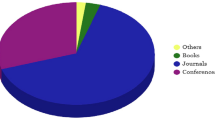Abstract
Two most important social influences that shape the opinion formation process are: (i) the majority influence caused by the existence of a large group of people sharing similar opinions and (ii) the expert influence originated from the presence of experts in a social group. When these two effects contradict each other in real life, they may pull the public opinions towards their respective directions. Existing models on opinion formation utilised the idea of expertise levels in conjunction with the expressed opinions of the agents to encapsulate the expert effect. However, they have disregarded the explicit consideration of the majority effect, and thereby failed to capture the concurrent and combined impact of these two influences on opinion evolution. To represent the majority and expert impacts, we explicitly use the concept of opinion consistency and expertise level consistency respectively in an innovative way by capitalizing the notion of entropy in measuring the homogeneity of a group. Consequently, our model successfully captures the opinion dynamics under the concomitant influence of majority and expert. We validate the efficacy of our model in capturing opinion dynamics in a real world scenario using the opinion evolution traces collected from a widely used online social network (OSN) platform. Moreover, simulation results reveal the impact of the aforementioned effects, and confirm that our model can properly capture the consensus, polarization and fragmentation properties of public opinion. Our model is also compared with some recent models to evaluate its performance in both real world and simulated environments.








Similar content being viewed by others
References
Asch, S.E.: Opinions and social pressure. Sci. Am. 193(5), 31–35 (1955)
Bruza, B., Welsh, M., Navarro, D., Begg, S.: Does anchoring cause overconfidence only in experts? Cogn. Sci. Soc. 33, 1947–1952 (2011)
Cha, M., Haddadi, H., Benevenuto, F., Gummadi, K.P.: Measuring user influence on twitter: The million follower fallacy. 4th International AAAI Conference on Weblogs and Social Media 10, 10–17 (2010)
Chacoma, A., Zanette, D.H.: Opinion formation by social influence: from experiments to modeling. PLoS ONE 10(10), e0140406 (2015)
Cheng, Z., Caverlee, J., Barthwal, H., Bachani, V.: Who is the Barbecue King of Texas?: A Geo-spatial approach to finding local experts on twitter. SIGIR 335–344 (2014)
Cho, J.-H., Swami, A.: Dynamics of uncertain opinions in social networks. IEEE Military Communications Conference 1627–1632 (2014)
Clifford, P., Sudbury, A.: A model for spatial conflict. Biometrika 60(3), 581–588 (1973)
Crokidakis, N.: The influence of local majority opinions on the dynamics of the sznajd model. J. Phys.: Conf. Ser. 012016, 487 (2014)
Das, A., Gollapudi, S., Munagala, K.: Modeling opinion dynamics in social networks. WSDM 403–412 (2014)
Das, R., Kamruzzaman, J., Karmakar, G.: Opinion formation dynamics under the combined influences of majority and experts. ICONIP 674–682 (2015)
Deffuant, G., Neau, N., Amblard, F., Weisbuch, G.: Mixing beliefs among interacting agents. Adv. Compl. Syst. 3(1), 87–98 (2000)
DeGroot, M.H.: Reaching a consensus. J. Am. Stat. Assoc. 69(345), 118–121 (1974)
Galam, S.: Sociophysics: a review of galam models. Int. J. Mod. Phys. C 19(03), 409–440 (2008)
Ghosh, S., Sharma, N., Benevenuto, F., Ganguly, N., Gummadi, K.: Cognos: Crowdsourcing search for topic experts in microblogs. SIGIR 575–590 (2012)
Hassan, R., Karmakar, G., Kamruzzaman, J.: Reputation and user requirement based price modelling for dynamic spectrum access. IEEE Trans. Mob. Comput. 13(9), 2128–2140 (2014)
Hegselmann, R., Krause, U.: Opinion dynamics and bounded confidence: models, Analysis and Simulation. J. Artif. Soc. Soc. Simul. 5(3), 1–24 (2002)
Javarone, M.A.: Social influences in opinion dynamics: the role of conformity. Physica A: Statistical Mechanics and its Applications 414, 19–30 (2014)
Kurmyshev, E., Juarez, H.A., Gonzalez-Silva, R.A.: Dynamics of Bounded Confidence Opinion in Heterogeneous Social Networks: Concord against Partial Antagonism. Physica A: Statistical Mechanics and its Applications 390(16), 2945–2955 (2011)
Li, L., Scaglione, A., Swami, A., Zhao, Q.: Consensus, polarization and clustering of opinions in social networks. IEEE J. Sel. Areas Commun. 32(6), 1072–1083 (2013)
Liao, Q., Wagner, C., Pirolli, P., Fu, W.-T.: Understanding experts’ and novices’ expertise judgement of twitter users. Computer-Human Interaction(CHI) 2461–2464 (2012)
Lima, F.W.S., Sousa, A.O., Sumuor, M.A.: Majority-vote model on directed Erdos-Renyi random graphs. Physica A: Statistical Mechanics and its Applications 387(14), 3503–3510 (2008)
Liu, B.: Sentiment Analysis - Mining Opinions, Sentiments, and Emotions. Cambridge University Press, New York, pp. 1–367 (2015)
Martinez-Camara, E., Martin-Valdivia, M.T., Urena-Lopez, L.A., Montejo-Raez, A.: Sentiment Analysis in Twitter. Nat. Lang. Eng. 20(01), 1–28 (2014)
Moussaid, M., Kaemmer, J.E., Analytis, P.P., Neth, H.: Social influence and the collective dynamics of opinion formation. PLoS ONE 8(11), e78433 (2013)
Novak, S., Elster, J.: Majority Decisions: Principles and Practices. Cambridge University Press, New York, pp. 1–288 (2014)
Pal, A., Counts, S.: Identifying topical authorities in microblogs. WSDM 45–54 (2011)
Pang, B., Lee, L.: Opinion mining and sentiment analysis. Found. Trends Inf. Retr. 2(1–2), 1–135 (2008)
Pineda, M., Toral, R., Hernandez-Garcia, E.: The noisy Hegselmann-Krause model for opinion dynamics. Eur. Phys. J. B 12(86), 1–12 (2013)
Varian, H.R.: Microeconomic Analysis. Norton, New York (1992)
Varshney, K.R.: Bounded confidence opinion dynamics in a social network of bayesian decision makers. IEEE J. Sel. Top. Signal Process 8(4), 576–590 (2014)
Weng, J., Lim, E.P., Jiang, J., He, Q.: Twitterrank: finding topic-sensitive influential twitterers. WSDM 261–270 (2010)
Xia, H., Wang, H., Xuan, Z.: Opinion dynamics: a multidisciplinary review and perspective on future research. Int. J. Knowl. Syst. Sci. 2(4), 72–91 (2011)
Xu, Z., Ramanathan, J.: Thread-based Probabilistic Models for Expert Finding in Enterprise Microblogs. Expert Syst. Appl. 43, 286–297 (2016)
Zhang, J., Hong, Y.: Opinion Evolution Analysis for Short-range and Long-range Deffuant-Weisbuch Models. Physica A: Statistical Mechanics and its Applications 392 (21), 5289–5297 (2013)
Author information
Authors and Affiliations
Corresponding author
Rights and permissions
About this article
Cite this article
Das, R., Kamruzzaman, J. & Karmakar, G. Modelling majority and expert influences on opinion formation in online social networks. World Wide Web 21, 663–685 (2018). https://doi.org/10.1007/s11280-017-0484-7
Received:
Revised:
Accepted:
Published:
Issue Date:
DOI: https://doi.org/10.1007/s11280-017-0484-7




